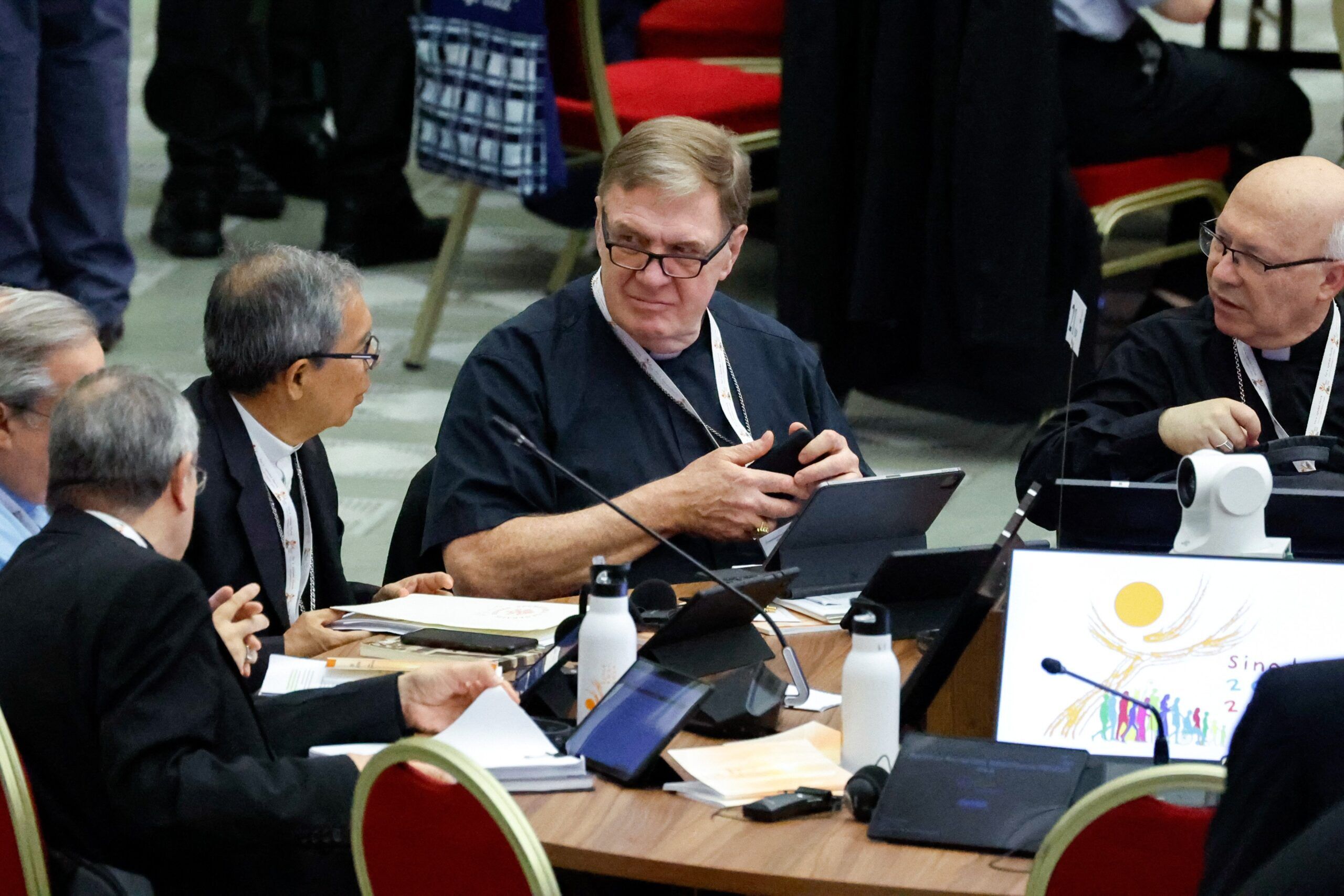Vatican announces synod assembly dates; formation of study groups
VATICAN CITY — The second assembly of the Synod of Bishops on synodality will meet Oct. 2-27 and will be preceded by several formal studies coordinated by the synod general secretariat working with various offices of the Roman Curia.
The Vatican announced the dates for the assembly Feb. 17, indicating that the desire of some synod members to spend less time in Rome was not accepted. The fall assembly will be preceded by a retreat for members Sept. 30-Oct. 1, the Vatican said.
And in response to a formal call by members of the first assembly of the synod, Pope Francis has agreed to the establishment of “study groups that will initiate, with a synodal method, the in-depth study of some of the themes that emerged.”
In a chirograph, or brief papal document, released Feb. 17, the pope said that “these study groups are to be established by mutual agreement between the competent dicasteries of the Roman Curia and the General Secretariat of the Synod, which is entrusted with coordination.”
However, the papal note did not list the topics to be studied nor the members of the groups. The synod office said it hoped the approved groups and their members could be announced by mid-March.
Pope Francis’ note focused on the obligation of the offices of the Roman Curia to work with the synod since both bodies, though distinct, are established “to promote in a synodal spirit the mutual relations of the bishops and of the particular Churches over which they preside, among themselves and in communion with the Bishop of Rome.”
In their synthesis report at the end of the first synod assembly, members voted to ask Pope Francis for several studies before the 2024 assembly, including on “the terminological and conceptual understanding of the notion and practice of synodality” itself; and another study on “the canonical implications of synodality,” conducted by “an intercontinental special commission of theological and canonical experts.”
Synod members also called for further theological study on the permanent diaconate and said, “theological and pastoral research on the access of women to the diaconate should be continued, benefiting from consideration of the results of the commissions specially established by the Holy Father, and from the theological, historical and exegetical research already undertaken.”
“If possible,” members said, “the results of this research should be presented to the next session of the assembly.”
After a request of the women’s International Union of Superiors General, Pope Francis established a commission to study the historic identity and role of women deacons. The commission worked from 2016 to 2019, and the pope gave a report on it to the superiors general, but it was not made public. He set up a second commission in 2020 after the Synod of Bishops for the Amazon; its results have not been published either.
The assembly of the synod on synodality also said, “We believe the time has come for a revision of the 1978 document ‘Mutuae Relationes,’ regarding the relationships between bishops and religious in the Church. We propose that this revision be completed in a synodal manner, consulting all involved.”
On several occasions after his election in 2013, Pope Francis said he had asked the dicastery for religious to revise “Mutuae Relationes,” a set of directives issued jointly with the then-Congregation for Bishops in 1978 to provide guidance to bishops and religious in their relationship. Pope Francis has said the norms need revision to ensure religious are not treated simply as employees or human resources for a diocese and to ensure that the orders’ autonomy does not lead them to activities in conflict with a local church.
The synod assembly also called for “a thorough review of formation for ordained ministry in view of the missionary and synodal dimensions of the Church.” Assembly members said that involves “reviewing the ‘Ratio Fundamentalis’ that determines how formation is structured.”
The “Ratio Fundamentalis” was last updated in late 2016 and provides guidelines for preparing men for the Latin-rite priesthood and ensuring their continuing education, training, and support.
This article was written by Cindy Wooden, Catholic News Service.
Featured image: Cardinal Joseph W. Tobin of Newark, N.J., and other members of the assembly of the Synod of Bishops pray before a working session in the Vatican’s Paul VI Audience Hall Oct. 26, 2023. (CNS photo/Lola Gomez)



